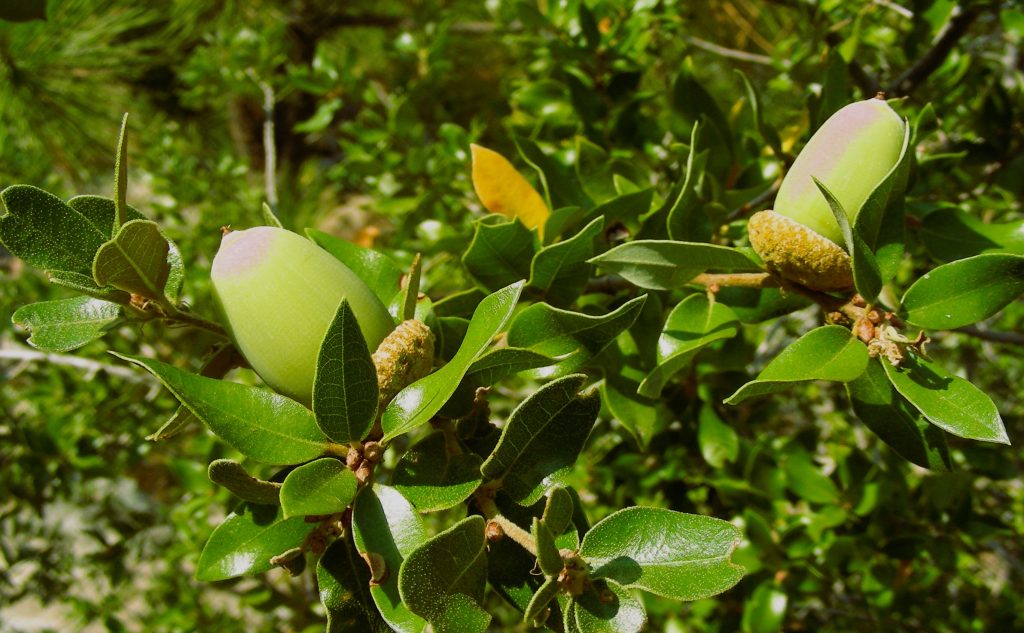Canyon Live Oak (Quercus chrysolepis): Comprehensive Guide

Introduction
Quercus chrysolepis, commonly known as Canyon Live Oak or Mexican Blue Oak, is a perennial species of oak native to the southwestern part of North America, particularly in the coastal ranges of California. Classified under the Protobalanus section, it belongs to the American oak and its relatives found in the southwestern United States and northwest Mexico. Known for short styles, acorns maturing in 18 months, and leaves typically featuring sharply pointed lobes with bristles at the tips.
Description
Tree View
Leaves Detail
Fruits
Habitat
Canyon Live Oak thrives near streams and drainage ravines, favoring microhabitats with cool and moist conditions. The leaves are glossy dark green on the upper surface with prominent dorsal spines. Quick identification includes the geometrically flat leaves of the Canyon Live Oak. It often coexists sympatrically with Quercus agrifolia and various other oak species. Fossil data suggests a broader distribution across the western United States during the early Holocene period.
Care for Canyon Live Oak
Soil and Watering
- Soil Preference: Well-drained soil is favorable for healthy growth.
- Watering Requirements: Regular watering, especially during dry spells, is beneficial.
Longevity
Canyon Live Oak exhibits a commendable lifespan, contributing to the ecological balance of its habitat.
Common Pests and Diseases
Common Pests:
- Aphids: Periodic checks are advisable to manage potential aphid infestations.
- Caterpillars: Vigilance against caterpillars, especially during new growth phases.
Diseases:
- Leaf Spot: Watch for signs of leaf spot diseases and apply appropriate preventive measures.
- Root Rot: Avoid overwatering to prevent root rot issues.
Uses
Indigenous peoples in the region historically utilized the acorns from Canyon Live Oak as a food source after leaching out tannins. Additionally, the roasted seed serves as a coffee substitute. After forest fires, the species regenerates vigorously through shoots from its base, showcasing high clonal diversity. Common alternative names for this taxon include Canyon oak and "Golden-Cup Oak."
Frequently Asked Questions
1. What distinguishes Canyon Live Oak leaves?
Canyon Live Oak leaves typically have sharply pointed lobes with bristles at the tips.
2. How do Native American communities use the acorns?
Historically, Native American communities in the area used the acorns as a food source after tannin leaching, and the roasted seeds were used as a coffee substitute.
3. What is the ecological significance of Canyon Live Oak after forest fires?
After forest fires, Canyon Live Oak demonstrates robust regeneration through shoots from its base, contributing to clonal diversity.
Conclusion
Canyon Live Oak stands as a resilient and ecologically valuable species in the southwestern landscapes. Understanding its care needs, potential threats, and historical uses provides valuable insights into preserving and appreciating this distinctive oak variety.
Note: This comprehensive guide offers information for general understanding, and specific conditions may vary.

Leave a Reply
You must be logged in to post a comment.